
The Macara Baronetcy, of Ardmore in St Anne-on-the-Sea in the County of Lancaster, was a title in the Baronetage of the United Kingdom. It was created in 1911 for the Lancashire cotton-spinner, Charles Macara. The title became extinct upon the death of the fourth Baronet in Dudley in 1986.
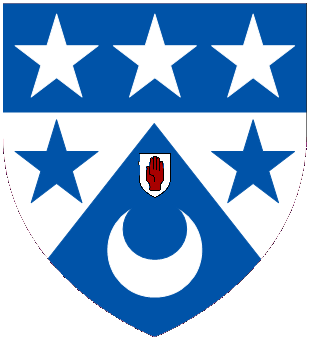
The Arnott Baronetcy, of Woodlands in the Parish of St Anne, Shandon in the County of Cork, is a title in the Baronetage of the United Kingdom. It was created on 12 February 1896 for the Irish entrepreneur and philanthropist John Arnott.
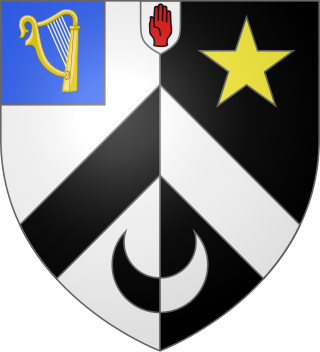
The Alexander, later Cable-Alexander Baronetcy, of the City of Dublin, is a title in the Baronetage of the United Kingdom. It was created on 11 December 1809 for William Alexander, Lord Mayor of Dublin. The second Baronet was a Director of the Bank of Ireland. The third Baronet was Attorney-General to Albert Edward, Prince of Wales, later Edward VII. The seventh Baronet assumed in 1931 by deed poll the additional surname of Cable. As of 31 December 2013 the present Baronet has not successfully proven his succession and is therefore not on the Official Roll of the Baronetage, with the baronetcy considered dormant.

There have been two baronetcies created for the Guise family, one in the Baronetage of England and one in the Baronetage of Great Britain. The latter creation is extant as of 2014.

The McLintock Baronetcy, of Sanquhar in the County of Dumfries, is a title in the Baronetage of the United Kingdom. It was created on 19 January 1934 for the accountant William McLintock. He was a senior partner in the firm of Thomson McLintock & Company, chartered accountants.
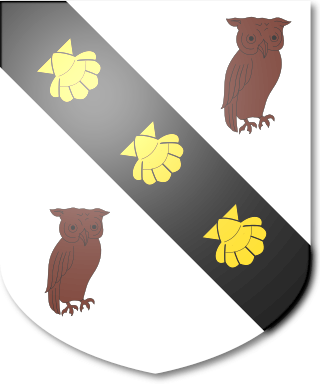
The Mactaggart Baronetcy, of King's Park in the City of Glasgow, is a title in the Baronetage of the United Kingdom. It was created on 2 February 1938 for John Mactaggart. He was a housing expert and the co-founder of the building firm Mactaggart & Mickel. The second Baronet was managing director of Mactaggart & Mickel. The third Baronet was chairman of the Society for Individual Freedom.

The Lowe Baronetcy, of Edgbaston in the City of Birmingham, is a title in the Baronetage of the United Kingdom. It was created on 30 January 1918 for Francis Lowe, Conservative Member of Parliament for Edgbaston from 1898 to 1929.

The McFarland Baronetcy, of Aberfoyle in the County of Londonderry, is a title in the Baronetage of the United Kingdom. It was created on 23 January 1914 for the Irish businessman John McFarland. He was founder of and a partner in the firm of McCrea and McFarland, engineering contractors, of Belfast and Derry, Chairman of Mulhollands, drapers, and owner of the Lough Swilly Steamship Company, and also served as Mayor of Londonderry. He was succeeded by his son, the second Baronet. He was a businessman, a Senator of Northern Ireland, Mayor of Londonderry, Lord Lieutenant of the City of Londonderry and an Irish Rugby union international. The third Baronet was a member of the Londonderry Corporation and a Deputy Lieutenant of the City of the County of Londonderry from 1956 to 1982.

The Millais Baronetcy, of Palace Gate in Kensington in the County of Middlesex and of St Ouen in Jersey, is a title in the Baronetage of the United Kingdom. It was created on 16 July 1885 for the painter and illustrator John Everett Millais. He was one of the founders of the Pre-Raphaelite Brotherhood. As of 2014 the title is held by his great-grandson, the sixth Baronet, who succeeded his father in 1992.

The Maclure Baronetcy, of The Home in Whalley Range near Manchester in the County Palatine of Lancaster, is a title in the Baronetage of the United Kingdom. It was created on 12 March 1898 for John William Maclure. He was Secretary of the Famine Relief Fund from 1862 to 1865 and sat as Conservative Member of Parliament for Stretford between 1886 and 1901.

The Macgregor Baronetcy, of Savile Row in the County of Middlesex, is a title in the Baronetage of the United Kingdom. It was created on 17 March 1828 for Patrick Macgregor, Serjeant-Surgeon to King George IV. Charles Reginald Macgregor (1847–1902), second son of the third Baronet, was a Brigadier-General in the Army.
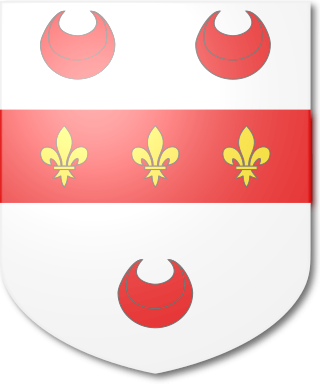
The Oakeley Baronetcy, of Shrewsbury, is a title in the Baronetage of Great Britain. It was created on 5 June 1790 for the Indian administrator Charles Oakeley. He served as Governor of Madras from 1790 to 1794. Frederick Oakeley was the second son of the first Baronet.

The Currie Baronetcy is a title in the Baronetage of the United Kingdom. It was created on 11 January 1847 for Frederick Currie, Foreign Secretary to the Indian Government and a member of the Supreme Council of India. He was a grandson of William Currie (1721–1781), nephew of William Currie (1756–1829), who was Member of Parliament for Upper Gatton and Winchelsea, and the brother of Vice-Admiral Mark John Currie.
The Hartwell Baronetcy, of Dale Hall in the County of Essex, is a title in the Baronetage of the United Kingdom. It was created on 26 October 1805 for Admiral Francis Hartwell.

The Levinge Baronetcy, of High Park in the County of Westmeath, is a title in the Baronetage of Ireland. It was created on 26 October 1704 for Richard Levinge, Speaker of the Irish House of Commons and Lord Chief Justice of the Irish Court of Common Pleas. The seventh Baronet sat as Liberal Member of Parliament for Westmeath from 1857 to 1865.
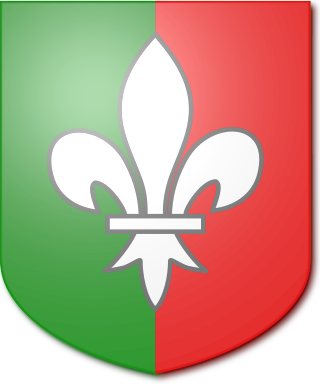
The ffolkes Baronetcy, of Hillington in the County of Norfolk, is a title in the Baronetage of Great Britain. It was created on 26 May 1774 for Martin ffolkes, FRS later High Sheriff of Norfolk and Member of Parliament for King's Lynn. The second Baronet represented Norfolk and Norfolk West in the House of Commons while the third Baronet represented King's Lynn. The fifth Baronet was Honorary Chaplain to Queen Victoria, Chaplain-in-Ordinary to Edward VII and George V and Chaplain to Edward VIII and George VI.

The Rycroft Baronetcy, of Calton in the County of York, is a title in the Baronetage of Great Britain. It was created on 22 January 1784 for Reverend Richard Rycroft. Born Richard Nelson, he was the only surviving son of John Nelson, and had assumed by Royal sign-manual the surname of Rycroft in lieu of his patronymic in 1758. The fifth Baronet was high sheriff of Hampshire in 1899. The sixth Baronet was high sheriff of Hampshire in 1938.

The Smith, later Smith-Marriott Baronetcy, of Sydling St Nicholas in the County of Dorset, is a title in the Baronetage of Great Britain. It was created on 1 June 1774 for John Smith, High Sheriff of Dorset in 1772. The second Baronet married Elizabeth Anne, daughter of Reverend James Marriott. The fourth Baronet assumed by Royal sign-manual the additional surname of Marriott. The fifth Baronet was High Sheriff of Dorset in 1873.

The Hoghton or Houghton, later Bold-Hoghton, later de Hoghton Baronetcy, of Hoghton Tower in the County of Lancashire, is a title in the Baronetage of England. It was created on 22 May 1611 for Richard Hoghton, Member of Parliament for Lancashire. The Hoghton family had been landowners in Lancashire since the reign of King Stephen and had been Knights of the Shire for Lancashire since the 14th century. The second Baronet represented Clitheroe and Lancashire in the House of Commons and was a Royalist leader during the Civil War. The third and fourth Baronets both sat as Members of Parliament for Lancashire. The fifth Baronet was Member of Parliament for Preston and East Looe while the sixth and seventh Baronets represented Preston. The eighth Baronet assumed the additional surname of Bold. In 1892 the ninth Baronet resumed, by Royal licence, the ancient family surname of de Hoghton.

The Lawson, later Howard-Lawson baronetcy, of Brough Hall in the County of York, was created in the Baronetage of the United Kingdom on 8 September 1841 for William Lawson. Born William Wright, he was the son of John Wright, of Kelvedon, by Elizabeth Lawson, daughter of the 5th Baronet of the 1665 creation whose surname he assumed in lieu of his Wright. His mother had previously inherited the Lawson family seat of Brough Hall.



















